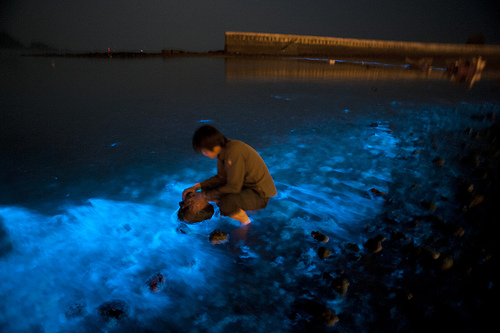Interesting Facts

When studying aquatic animals bottle sampling is a common
form of organism collection, but plankton nets can also be used
to collect N. scintillans (Dela-Cruz et al. 2004).
When studying population dynamics of Noctiluca scintillans, the process is quite complicated because it is hard to control for many different variables (Miyaguchi et al. 2006).
Noctiluca scintillans itself is not toxic, but it can have a build up of ammonia that is released during red tides and may be responsible for the increase of fish mortality during red tides (Sahling and Uhlig 1990).
Noctiluca scintillans populations size has a strong correlation
to the amount of ammonia present in the water along with the amount
of viable food sources for the organism (Dela-Cruz et al. 2004).
As previously mentioned in Interactions, Noctiluca scintillans is not able to swim substantially, but using its positive buoyancy it is able to move up the water column to come into contact with prey (Kiorbe and Titelman 1998).
Although more information and research is needed, there seems to
be a positive correlation between the presence of Thalassiosira
(prey) and Noctiluca scintillans (prey). Both organisms have become
more common globally over the past few decades (Dela-Cruz et al.
2004).
_____________________________________________________________________________________________________
Australia's amazing bioluminescent lake brought about by
Noctiluca scintillans. 2013. Permission granted by
Lehren Entertainment.
The video can also be found on the
Weird True Facts Youtube Channel.
_____________________________________________________________________________________________________
Next you can look at our References. If you would like to start fresh on this website, you can go to the Homepage.